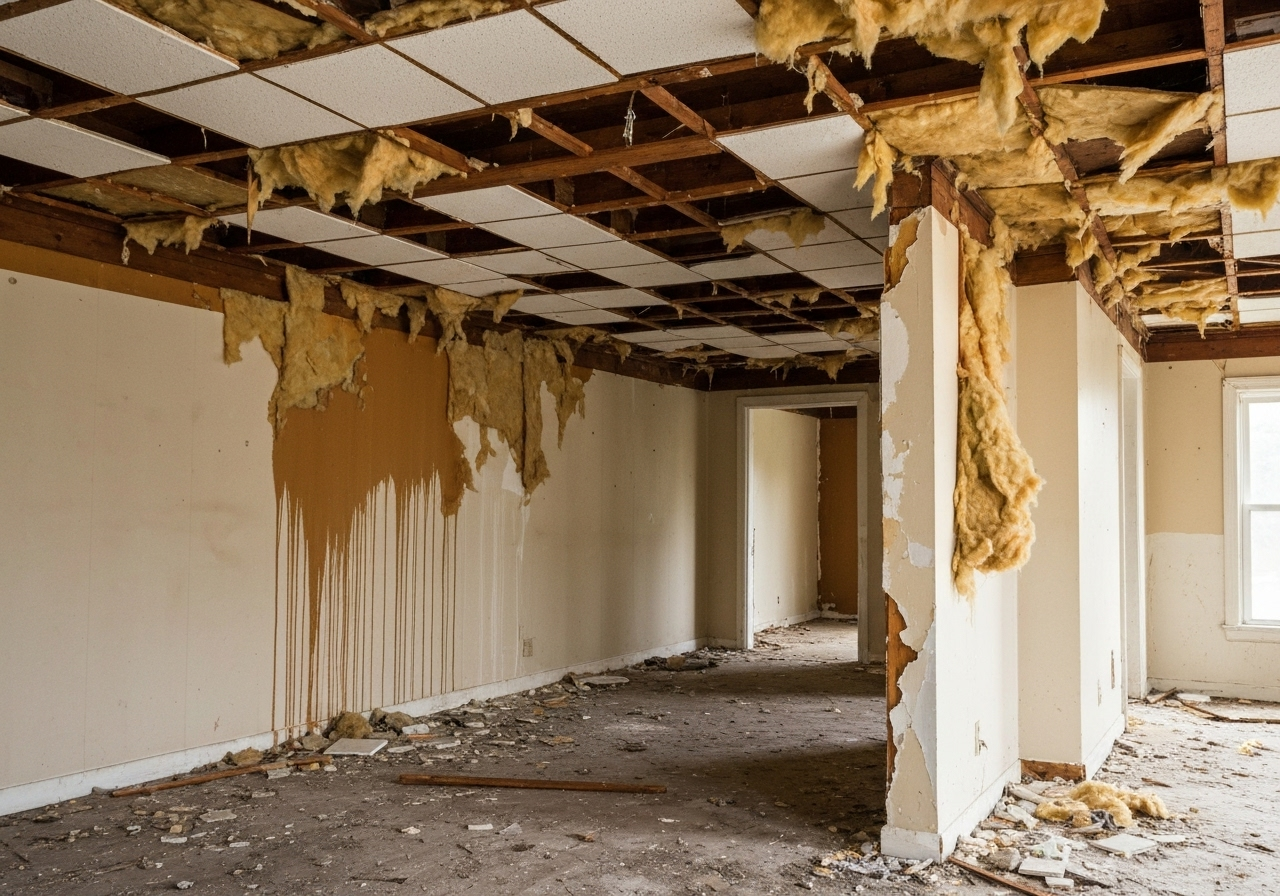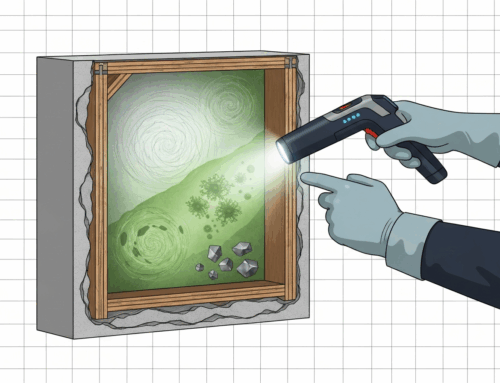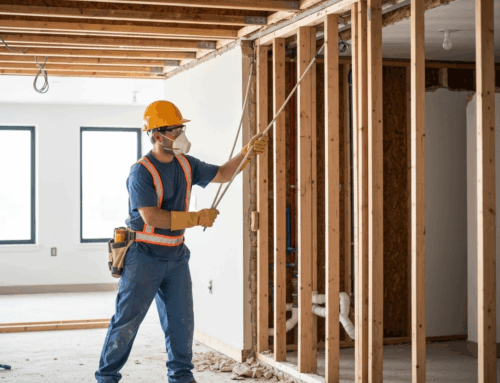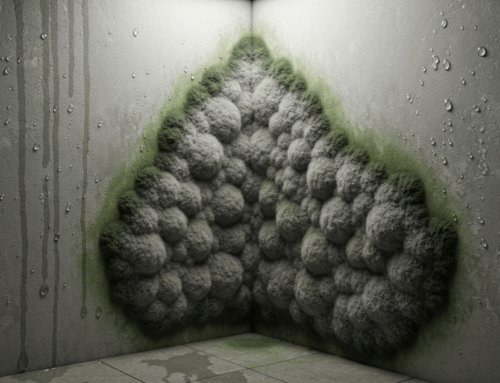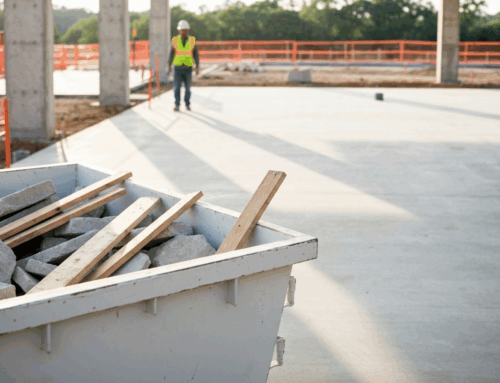Introduction: When South Carolina Storms Hit Home
South Carolina is no stranger to severe weather events, from hurricanes lashing the coast to intense thunderstorms sweeping inland. While the immediate aftermath often focuses on visible damage, a silent and significant threat can emerge: disturbed asbestos-containing materials (ACMs). For homeowners and businesses across the Palmetto State, understanding the complexities of asbestos removal & safety for homeowners & businesses after a severe weather event is paramount. Ignoring this hidden danger can lead to severe health risks and costly remediation efforts.
Understanding the Hidden Threat: Asbestos After Severe Weather
Asbestos, a naturally occurring mineral fiber, was extensively used in building materials until the late 20th century due to its fire resistance, insulation properties, and durability. However, when these materials are damaged or disturbed, microscopic asbestos fibers can become airborne. Inhalation of these fibers can lead to serious and often fatal respiratory diseases, including mesothelioma, asbestosis, and lung cancer, with symptoms often appearing decades after exposure.
Severe weather events like floods, hurricanes, and tornadoes can significantly compromise structures, leading to the disturbance of ACMs. High winds can rip off roofing and siding, while floodwaters can saturate walls, ceilings, and insulation, weakening materials and making them friable (easily crumbled, releasing fibers). This creates an immediate health hazard during cleanup and rebuilding efforts, demanding careful attention to safe storm damage asbestos removal South Carolina.
South Carolina Storm Recovery: Asbestos Removal & Safety for Homeowners & Businesses after a Severe Weather Event
After a storm, the focus shifts to recovery, but this must be approached with extreme caution, especially concerning potential asbestos exposure. The core principle of Asbestos Removal & Safety for Homeowners & Businesses after a Severe Weather Event is to prevent further contamination and protect occupants. Properties built before the 1980s are particularly likely to contain asbestos in various components:
- Roofing and siding shingles
- Floor tiles and their adhesives
- Insulation (pipe, boiler, attic, wall)
- Ceiling tiles
- Joint compound and plaster
- Asbestos cement products
When these materials are damaged by water, wind, or impact, they can release harmful fibers. This necessitates a proactive approach to identification and professional handling to ensure a safe and effective recovery process.
Spotting the Danger: Signs of Asbestos Damage in Your Property Post-Storm
Recognizing potential asbestos damage after a storm is critical, though it’s important to stress that identification should always be left to professionals. Here are signs that may indicate asbestos-containing materials have been disturbed:
- Damaged or crumbling building materials: Any insulation, flooring, ceiling tiles, or siding that is visibly broken, cracked, or deteriorated after the storm could be releasing asbestos fibers.
- Water-stained or swollen materials: Floodwaters can severely damage plaster, drywall, and insulation, causing them to break down and release fibers.
- Debris from older construction: If your property sustained structural damage and exposed materials from pre-1980s construction, assume asbestos might be present.
If you suspect asbestos, do NOT attempt to clean or remove the materials yourself. Disturbing asbestos without proper containment and personal protective equipment will worsen the hazard. Instead, isolate the area, prevent access, and immediately contact qualified professionals for assessment.
The Professional Approach: Safe Asbestos Abatement and Remediation
Safe asbestos abatement is a highly specialized process that must be performed by trained and certified experts. Professional asbestos removal companies follow stringent protocols to ensure the health and safety of workers, occupants, and the surrounding environment. The typical steps include:
- Initial Inspection and Testing: A certified asbestos inspector conducts a thorough survey to identify all ACMs and takes samples for laboratory analysis.
- Area Containment: The work zone is meticulously sealed off using plastic sheeting, negative air pressure machines with HEPA filters, and decontamination units to prevent the spread of asbestos fibers.
- Safe Removal Techniques: Trained professionals, wearing specialized personal protective equipment (PPE), carefully remove the ACMs using wet methods (e.g., wetting agents) to minimize fiber release.
- Secure Packaging and Disposal: Removed asbestos waste is immediately double-bagged, sealed, labeled, and transported by licensed haulers to approved landfills that specialize in hazardous waste disposal.
- Post-Abatement Clearance Testing: After removal and thorough cleaning, independent air monitoring is conducted to ensure airborne fiber levels are below regulatory limits before the area is deemed safe for re-occupancy or further work.
This systematic approach is essential for preventing cross-contamination and ensuring the long-term safety of your property, as detailed in guides on removing hazardous materials before demolition SC: Safety First.
Adhering to SC Regulations: Why Expertise Matters in Asbestos Removal
In South Carolina, asbestos handling and removal are governed by strict federal and state regulations, primarily enforced by the South Carolina Department of Environmental Services (SCDES). These regulations are in place to protect public health and the environment from the severe risks of asbestos exposure.
Key regulatory aspects include:
- Licensing and Accreditation: Individuals and companies performing asbestos inspection, project design, supervision, and abatement work in South Carolina must be licensed and accredited by SCDES. This ensures that only qualified professionals handle asbestos projects, as mandated by the South Carolina Code of Laws, Title 44, Chapter 87.
- Notification Requirements: For most non-exempt properties, written notification must be submitted to the SCDES Bureau of Air Quality a minimum of 10 working days prior to demolition or renovation activities involving asbestos.
- Work Practices: Specific work practices, such as wetting materials to prevent fiber release and strict containment, are mandated during asbestos removal projects.
- Proper Disposal: Regulations dictate how asbestos waste must be packaged, labeled, transported, and disposed of at approved landfills.
While federal and state regulations often have limited exemptions for single-family homes, if asbestos is present and disturbed, safe handling and proper disposal are still legally required. Attempting DIY asbestos removal without proper training, equipment, and adherence to these regulations is not only dangerous but can lead to significant civil penalties and increased cleanup costs. This highlights why professional expertise is non-negotiable for compliance and safety, as emphasized in resources like South Carolina asbestos removal regulations 2025: Your Essential Guide to Compliance and Safety.
Beyond Removal: Ensuring a Healthy & Safe Environment
The successful removal of asbestos is a significant step, but it’s part of a larger commitment to a healthy and safe indoor environment. After asbestos abatement, it’s crucial to confirm the area is truly clean through clearance air monitoring. This ensures that no hazardous fibers remain airborne, allowing for safe re-occupancy. Beyond asbestos, severe weather events often bring other environmental concerns, such as mold growth due to water intrusion. A comprehensive storm recovery plan may also include post-flood asbestos and mold remediation to address all potential hazards.
Prioritizing professional remediation for all hazardous materials ensures that your property is not only structurally sound but also free from unseen dangers, safeguarding the long-term health of its occupants.
Your Trusted Partner in Storm Recovery: Contact Piedmont Quality Air
When navigating the complexities of post-storm recovery and hazardous material removal in South Carolina, partnering with a qualified and experienced professional is essential. Piedmont Quality Air is committed to protecting the health and safety of your living and working environments. Our team of experienced and highly trained professionals specializes in comprehensive asbestos removal, mold remediation, and interior demolition services. We utilize specialized equipment and adhere strictly to all federal and state regulations for hazardous material removal, ensuring every project is handled with the utmost care and precision. We understand the unique challenges faced by homeowners and businesses after severe weather events in South Carolina and strive to provide tailored solutions that minimize disruption while upholding the highest safety standards. Your peace of mind, knowing your property is safe and compliant, is our priority.
Visit our Contact Us page.

